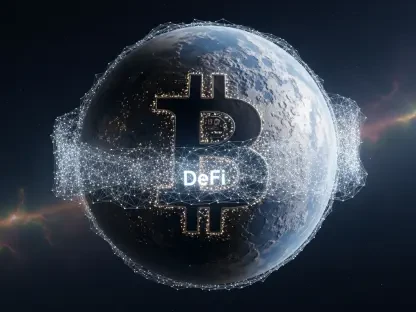Diving into the rapidly evolving world of cryptocurrency ETFs, I’m thrilled to sit down with Kofi Ndaikate, a seasoned expert in fintech, blockchain, and cryptocurrency regulation. With his deep understanding of the intersection between innovative financial products and regulatory landscapes, Kofi offers invaluable insights into the latest developments surrounding Bitwise’s spot Chainlink ETF and the broader crypto ETF market. In this conversation, we explore the significance of recent milestones, the challenges of regulatory approval, and the competitive dynamics shaping the future of crypto-based investment products.
What does it mean for Bitwise’s spot Chainlink ETF to be listed on the DTCC registry, and how significant is this step toward a full launch?
Being listed on the Depository Trust and Clearing Corporation (DTCC) registry is a critical logistical step for any ETF. It means the fund is in the “active” and “pre-launch” phase, which signals that preparations are underway for a potential rollout. Essentially, it’s a sign that Bitwise is laying the groundwork for trading, as DTCC facilitates the clearing and settlement of securities. While this doesn’t guarantee SEC approval, it’s a strong indicator of progress. Historically, many funds that reach this stage are close to launch, often within weeks or months, assuming regulatory hurdles are cleared. It’s a big deal because it shows intent and readiness, but it’s not the final green light.
Can you walk us through the current status of Bitwise’s application for the Chainlink ETF with the SEC?
Bitwise filed their S-1 registration for the spot Chainlink ETF back in August, which is the initial step to outline the fund’s structure and intent to the SEC. As of now, there haven’t been public updates on specific feedback from the SEC, which isn’t unusual at this stage. The SEC often takes its time with crypto-related products due to concerns over market manipulation and investor protection. Based on past trends with Bitcoin and Ethereum ETFs, approval isn’t guaranteed, but the growing acceptance of crypto ETFs—especially after Bitcoin spot ETFs were approved—suggests a moderate chance. However, the SEC might request amendments or delay decisions, so it’s a waiting game.
How is Bitwise’s Chainlink ETF structured, and why did they choose this particular framework?
Bitwise has set up the Chainlink ETF as a Delaware statutory trust, which is a common structure for investment funds due to its flexibility and favorable legal environment. Delaware offers clear rules and protections for trusts, making it easier to manage and attract investors. Additionally, the ETF’s Net Asset Value (NAV) is tied to the CME CF Chainlink–Dollar Reference Rate, a benchmark that provides a reliable, transparent price feed for LINK. This is crucial because it ensures the ETF’s value reflects real-time market data, reducing risks of discrepancies or manipulation. It’s a smart move to build trust with both regulators and investors.
Why hasn’t Bitwise filed a Form 8-A yet for the Chainlink ETF, and what does this tell us about their timeline?
A Form 8-A is a key document required to register securities for trading on a national exchange, and it’s often one of the last steps before a launch. The fact that Bitwise hasn’t filed it yet suggests they’re still finalizing details or awaiting feedback from the SEC on their S-1. It could also mean they’re strategically timing the filing to align with market conditions or regulatory signals. Without this form, the launch isn’t imminent, but I’d guess they’re not far off—perhaps waiting for a clearer nod from the SEC or finalizing their choice of exchange. It’s a critical piece of the puzzle, and its absence indicates they’re still in preparation mode.
Bitwise hasn’t picked a specific US national exchange for listing the Chainlink ETF shares. What might be behind this decision?
Choosing an exchange is a strategic decision that impacts visibility, trading volume, and investor access. Bitwise might be holding off to negotiate better terms or fees with exchanges like NYSE or Nasdaq, which are common for ETFs. They could also be gauging which platform aligns best with their target audience—retail or institutional investors. Delaying this choice allows flexibility, especially if market dynamics shift or if they’re coordinating with the SEC on other approvals. I’d speculate NYSE Arca, which has hosted other crypto ETFs, could be a frontrunner, but it’s hard to say without more details. The exchange choice ultimately shapes how easily investors can trade the ETF.
How does Grayscale’s filing to convert its Chainlink Trust into a spot ETF compare to Bitwise’s approach?
Grayscale’s move to convert its existing Chainlink Trust into a spot ETF, filed in September, mirrors Bitwise’s goal but differs in execution. Grayscale already has an established trust product, so their approach leverages an existing investor base and infrastructure, potentially speeding up the process if approved. Bitwise, on the other hand, is building from the ground up with their ETF proposal. Both face similar regulatory scrutiny, but Grayscale’s conversion model might be seen as less risky by the SEC since it’s not entirely new. Having multiple players in the race could pressure the SEC to act, as it shows market demand, but it also means competition for first-mover advantage.
With five spot XRP ETFs also appearing on DTCC, how does this broader activity relate to the Chainlink ETF’s journey?
The appearance of multiple spot XRP ETFs on DTCC alongside Chainlink’s listing reflects a broader push within the crypto industry to bring more digital assets into the ETF space. It’s a sign of growing confidence among asset managers that the SEC might be warming to these products, especially after Bitcoin and Ethereum ETF approvals. For Chainlink, this parallel activity could be beneficial—it shows regulators that the market isn’t just fixated on one asset, which might normalize crypto ETFs as a category. However, it also means more competition for regulatory attention, as the SEC has to evaluate multiple filings simultaneously.
What is your forecast for the future of crypto ETFs like Chainlink in the US market?
I’m cautiously optimistic about the future of crypto ETFs, including Chainlink. The US market is slowly but surely embracing these products, as seen with Bitcoin and Ethereum ETFs gaining traction. Chainlink, with its unique role in decentralized finance through oracle services, has a compelling case for investor interest. However, much depends on the SEC’s evolving stance—whether they prioritize investor protection over innovation or find a balance. I expect we’ll see more approvals in the next one to two years, but it won’t be a floodgate. Regulatory clarity and market maturity will be key drivers, and Chainlink could be among the next wave if Bitwise and others navigate the process successfully.









